 |
 |
 |
 |
 |
 |
 |
 |
 |
 |
 |
 |
 |
 |
 |
 |
 |
 |
 |
| Five Temples of Shaolin |
|
|
 |
|
|
|
Menu |
|
|
|
|
|
| It should be made known to the reader that there were possibly five main Shaolin temples at the height of the order, though all of the temples were rarely active at the same time. It must be said at this point that much of the Shaolin story may be just legend created for films, and originally during Qing dynasty tales such as the Sword-Man fiction, as well as boasting of teachers to attract business. |
|
|
|
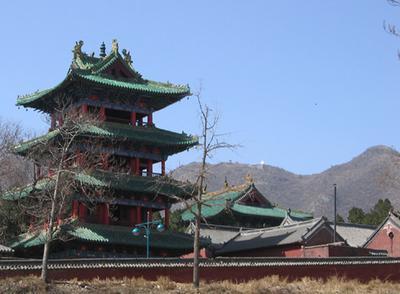 |
|
| The original Shaolin Si--often called the Northern Shaolin Temple--in Henan Province, was built in 495AD (right and below). This is the place portrayed in most kung fu movies. During most of its history, Shaolin Si was the seat of the senior Shaolin monks. Early martial arts history is centred round this temple, which is in a peaceful valley between Shaoshi Shan--the Daoist holy mountain attributed to heaven--and Wuru Feng, which holds Da Mo's cave. It is the birthplace of Zen Buddhism and martial arts, as we know them today. The temple was destroyed as a result of the Boxer Rebellion of 1901, but probably not totally until the late 1920s. The Government restored the temple during the mid-1970s as a major Chinese tourist attraction. Today, as well as the temple and surrounding mountains, it holds a sword factory; and the Shaolin Monastery Wushu Institute, which enrols around 5500 full-time students. On graduation, many of these students gain employment as police officers and physical education teachers, while a few remain to perform their art world-wide. |
|
|
|
|
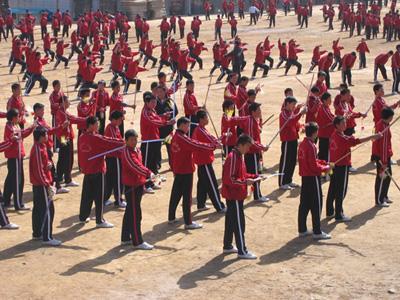 |
|
|
|
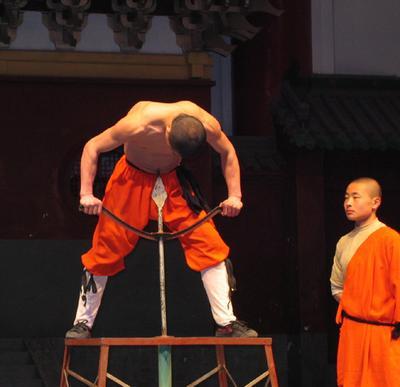 |
|
|
|
|
 |
|
|
|
|
The Southern Temple (Nanputuo Si) (below) was built within Qing Yuan Mountain's eastern peak in Putian's Lin Shan neighbourhood, (close to Fuzhou). It is 11 kilometers up Nan Shaolin Lu (South Shaolin Road), Fujian Province. The area is especially beautiful with warm breezes and rich vegetation, a perfect place for Chan reflection. From the site, directly east is Fuqing Bay, and to the south is Xing Hua Bay.
It isn't clear when the temple was built (possibly as early as 557AD) or what its connection to the Northern Temple was. Even after the Yuan dynasty the Northern and Southern Shaolin temples may have developed alone. A record reports that 13 staff monks named: First Empty, Half Empty, Non Empty, Emptiness of Color, Zen Empty, Understanding Empty, Enlightened Empty, Empty Wisdom, Quiet Empty, Really Empty, Truly Empty, Empty Law and Empty Rule built the Southern Temple and settled there. The Record also says that of the 13 monks, seven died among the soldiers of King Zheng.
The temple's monks grew to number in the thousands, with hundreds of acres and fragrant forests; larger than the Henan Temple, it served as a headquarters when the Northern Temple was destroyed or under threat. Because Shaolin opposed the Min ruler, Wang Shen Zhi, the temple was razed for the first time. In the Song dynasty because thousands of monks opposed the Mongols, the Temple was destroyed for a second time. During the Ming dynasty the Shaolin soldier monks were called out to fight coastal pirates for the Emperor Li Shi Min. The Fujian people must have been especially impressed, as the pirates being fought in the southern region for over ten years were renowned fighters. Later during the early Qing dynasty, when the triads were organized, the call to 'overthrow the Qing and return the Ming' was heard. The Shaolin martial monk�s earlier loyalty to the Ming was deliberately used as an example to rally involvement in a strategic war and encourage boldness. It has always been related to the early triad legends. In 1763, the Qing emperor issued orders to attack it again, this time remaining a ruin.
In 1990 archeologists uncovered a site of over 5000 square meters, currently the largest temple found within China, with strata beneath that included Song, Yuan, Ming and late Qing dynasty periods. There seem to be strata below the Northern Song level however it is yet to be excavated. It took the authorities two years to decide that this was indeed the location of the famous and long lost Southern Shaolin Temple. In 2001 a brand new temple and martial arts school, based on the layout of the original, was built on the exact same spot of the old temple. Practically nothing has been left of the original ruins apart from some stone artifacts and bricks. |
|
|
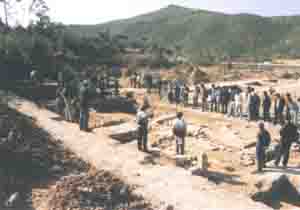 |
|
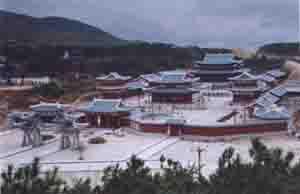 |
|
|
|
|
| Kwangtung Snake Temple taught many great warriors. The monastery was built in a mountain area, overlooking the ocean, near Shanghai. It was built in late 1700's as a Shaolin temple. It was shelled during the fighting which followed the Boxer Rebellion. |
|
|
 |
|
|
Wudang Tiger Temple (left) was built in a more politically unstable area around Wudang Shan in Hubei Province. Mercenary monks, including Bok Mei came from this monastery, eventually moving to Henan and thus involving Shaolin in its biggest political incursion. Integrated into the Shaolin Order around 800AD, the area today is still famous for its Wudang style of kung fu and there are many schools in and around the mountain town. |
|
|
|
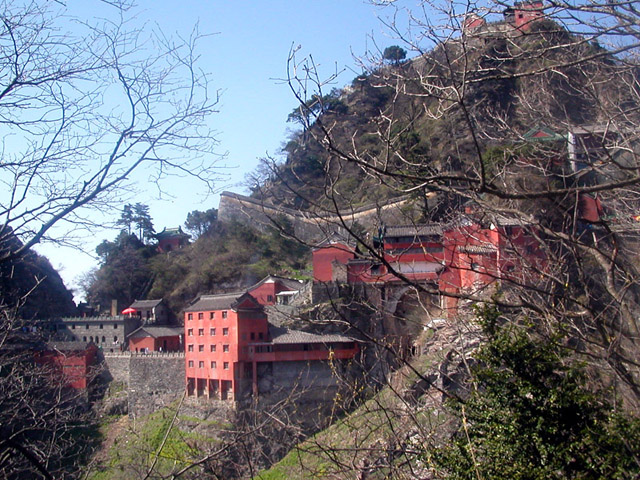 |
|
|
|
|
| Finally, the Crane Temple was located in an inaccessible area of the Sichuan Province and imported monks much like research institutions do today. The temple itself was very old, probably Daoist in origin and was in close contact with nearby Tibet. It was integrated into the Shaolin Order around 1500AD. This was a major medical school for four centuries and had libraries filled with tomes from both East and West. Here an annual tournament took place for the right to Abbott this rich monastery, causing a rivalry between the common victor, Wudang Temple, and the other Shaolin Orders. After W.W.II, the buildings were used for artillery practice by both the Kuomintang and Communist armies, but were later restored in the early 1970s. Today the buildings serve as the conservation service headquarters for the bamboo forests of Sichuan and a research centre for the giant pandas in Wolong. |
|
|
|
 |
|







